
SEO is a vital component for driving traffic, conversions and sales for businesses of any size. Page 1 of Google is still the holy grail of internet marketing and, while it seems like a daunting task, the right strategy can take you to the promised land.
Here are 13 actionable SEO tips to improve organic rankings and traffic for your website.
1. Improve Your Website Page Speed
2. Focus On Search Intent With Long-tail Keywords
3. Write For Humans, Not for Search Engines
4. Increase Search Relevance With Landing Pages
5. Use Rich Snippets and Tailor Your Content for Search Engines
6. Optimize Title Tags and Meta Descriptions
7. Use Concise, Descriptive URLs with Keywords
8. Perform a Keyword Gap Analysis
9. Optimize Your Images
10. Step Up Your Link Building Game
11. Audit Your Website Often
12. Utilize AI for Content Creation
13. Implement a TikTok SEO Strategy
1. Improve Your Website Page Speed
The faster a web page loads the higher the conversion rate and lower the bounce rate. As the amount of internet content grows people are becoming more impatient; therefore, any barrier to entry when trying to load a website will frustrate users and risk losing them forever.
Website and web page speed optimization can be quite complex topics. Thankfully there are some simple things you can do to your website to fix the most common issues related to slow speeds.
- Make sure your web hosting server provides ample bandwidth to handle the size of your website and the amount of traffic you receive.
- Ensure your website code and architecture is up to standards and follows best practices.
- Optimize your images and videos for file size, scalability and next gen formats.
MOZ, a leading authority on SEO is a great resource for page speed optimization tips and techniques.
2. Focus On Search Intent With Long-tail Keywords
There are two types of keywords to focus on in an SEO campaign: primary and secondary. A primary keyword would be something like [miami apartment rentals]. A long-tail keyword is more descriptive and will often be a search phrase tied to a more specific search intent. An example would be [miami furnished beach apartment rentals].
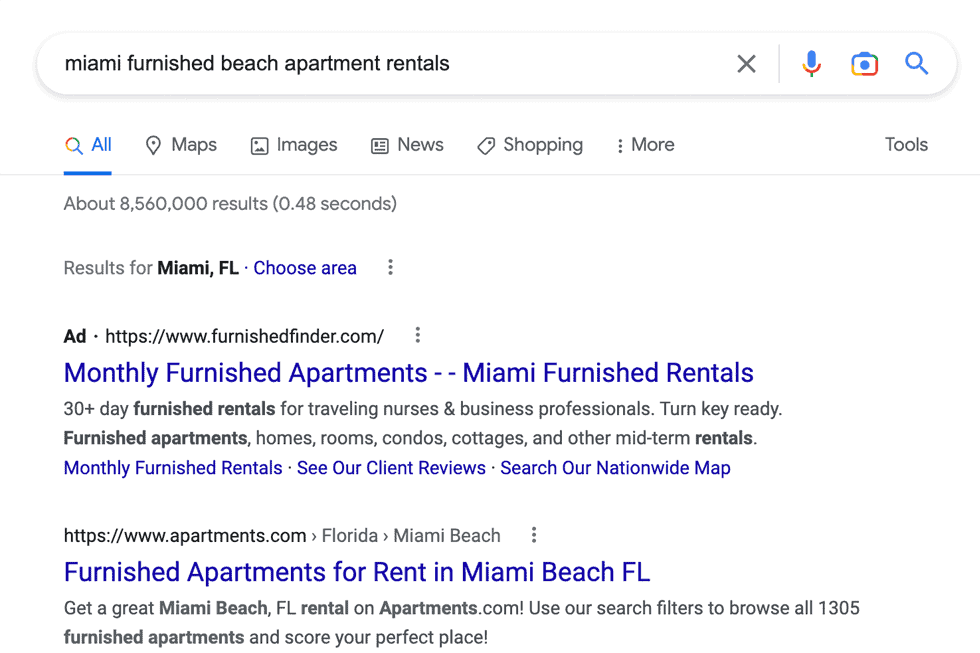
Primary keywords typically have higher search volume, higher high competition and are more expensive. Primary keywords may be searched by people looking for general information or out of curiosity. Long-tail keywords are generally used by people looking for something very specific.
The goal of SEO is to capture searchers with a high degree of intent so you don’t attract visitors to your website who are unqualified or unfit for what you’re offering.
3. Write For Humans, Not for Search Engines
In the fall of 2019 Google released a big algorithm update called BERT. The goal of the update was to revamp the way Google processes language and queries in order to make its search engine more human-like. In short, Google now reads the way a human would, and can process whole thoughts, instead of reading robotically, word-by-word.
What does this mean for SEO?
In short, Google now understands better than ever the intent of people searching for your content. The days of pouring hours of energy into keyword density, keyword frequency and over optimizing web pages solely to satisfy the search engine are gone. Now the name of the game is writing natural, long form content that aims to provide users with useful content.
Are keywords still important? By all means, yes! However, you should spend more energy on giving your users a great experience by producing content that serves their needs. Trust that Google will be able to recognize and reward you accordingly and you’re ahead of the game.
4. Increase Search Relevance With Landing Pages
The primary goal of SEO is to make your website pages appear as high as possible in search results for relevant search queries. When someone performs a search, Google’s spiders crawl every single page on the internet looking for those that most closely match what the user is looking for.
Creating highly optimized landing pages allows Google to connect search intent to your website. Landing pages should be focused on a single topic, product or service in order to create the highest degree of relevance.
If you’re a SaaS company, for example, it makes sense to create landing pages that highlight your products and your features. The email marketing company Klaviyo’s website is a perfect example. Their landing pages are arranged in separate columns in the navigation menu: Products and Features. There is a dedicated page for each product, and for each feature.
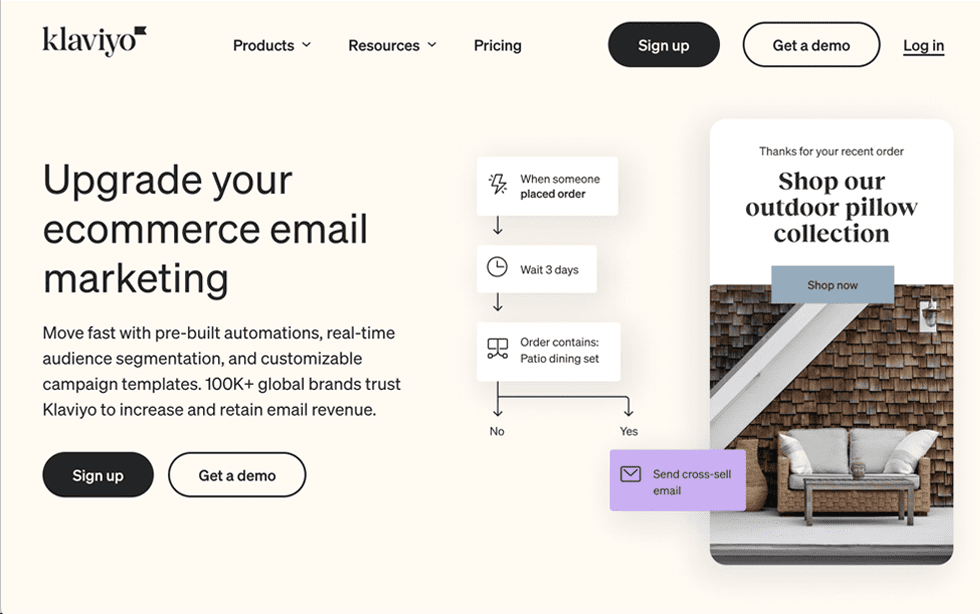
Looking at their Email page, it is beautifully designed, informative and very easy to scan. It includes a product overview, value propositions, logos of customers using the product, testimonials from a few notable clients and calls-to-action to sign up or get a demo. Note that while the primary keyword, [email], is mentioned 22 times on the page (yes, we counted) it’s dispersed in a logical and necessary way that feels natural to the reader. Also, some form of the primary keyword is used in the page’s title tag, meta description, heading tags and image alt tags.
The Klaviyo example is very well executed and can be applied to virtually any industry.
5. Use Rich Snippets and Tailor Your Content for Search Engines
Rich snippets are like regular Google search results, but with some extra information added. Rich snippets are pulled from Structured Data contained in your website’s HTML code. Common examples are events, recipes, how-to lists and reviews.
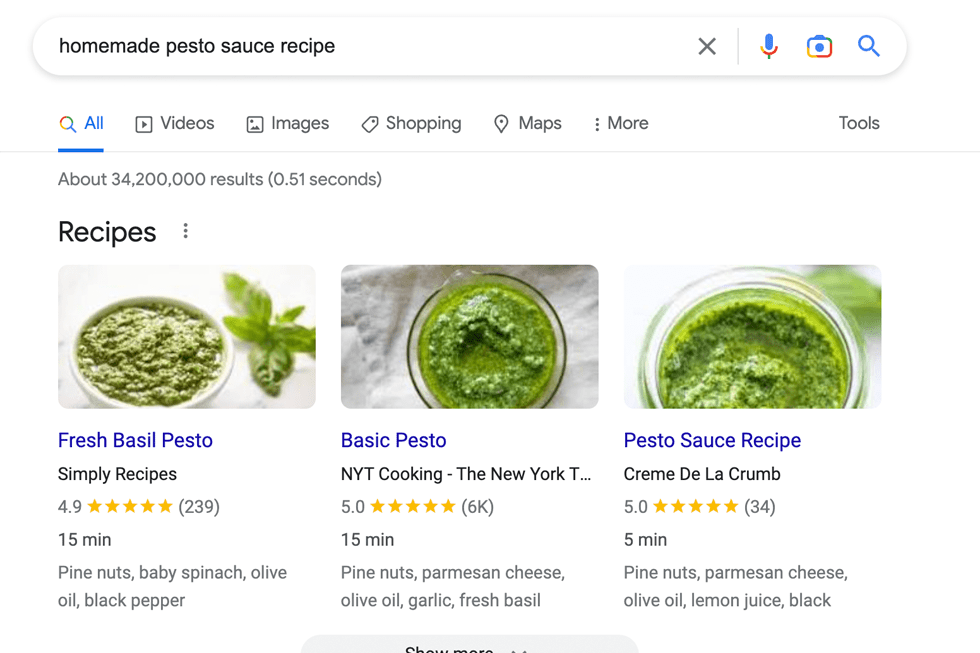 The nice thing about rich snippets is they provide more context about your content without needing to click through to the actual pages on your website. The format is visually inviting and snippets often appear above other search results, making them highly visible.
The nice thing about rich snippets is they provide more context about your content without needing to click through to the actual pages on your website. The format is visually inviting and snippets often appear above other search results, making them highly visible.
It should be noted that while Google has stated rich snippets are not currently being used as a ranking signal, they have been proven to increase click-through-rates, which can in turn impact your SEO.
6. Optimize Title Tags and Meta Descriptions
Titles Tag and Meta Descriptions are metatags used by Google to determine what your website pages are about. These two tags are pulled from the HTML code on your site and displayed in search results.
As explained by Google:
Your page title and meta description might be the first thing your audience ever sees. Users might decide whether to click or skip your page based on these alone. That’s a lot of power for so few words, so make sure they’re impactful.
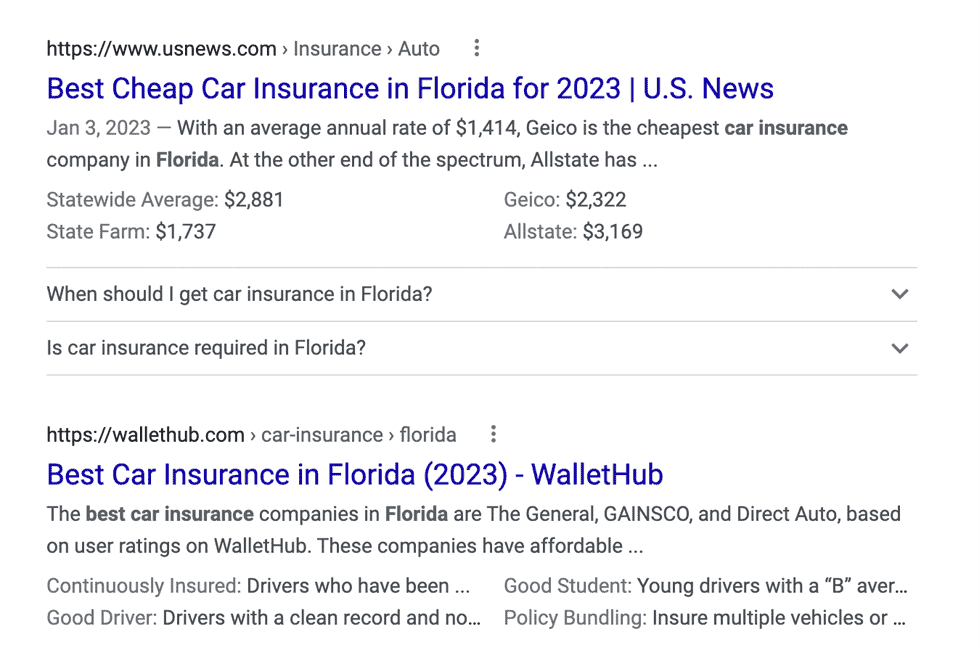
The title tag is a critical ranking signal for SEO and should be carefully written to include the appropriate keywords, length and structure. The title tag is displayed both in search results and at the top of each web page.
Pro Tips:
- Write unique title tags for each page
- Include primary keywords to match the topic of each page
- Be descriptive and attention grabbing to encourage clicks
- Add your brand or company name at the end of each title tag
- Use sentence case or title case
- Use a maximum of 60 characters
The meta description is a paragraph of descriptive text to explain what your site or page is about. While this is not a direct ranking factor, it can influence click-through rates which indirectly impacts SEO.
Pro Tips:
- Use a maximum of 160 characters
- Include your target keywords
- Describe what your pages are about
7. Use Concise, Descriptive URLs with Keywords
Perfecting the structure of URLs can make a big impact on your on-page SEO. Logical and user-friendly URLs help search engines understand what your pages are about while also providing a clear indication in the SERPs of what searchers can expect when they click through to your website. Avoid vague or overly descriptive URLs and always focus on things like primary keyword, category name and product or service name.
8. Perform a Keyword Gap Analysis
Earlier in this article we covered the power of long-tail keywords and how they can compliment your SEO strategy. Typically long-tail keywords are discovered while performing a keyword gap analysis. The goal of a gap analysis is to find keywords that your competitors are ranking for but that you are not. This uncovers untapped opportunities to rank more keywords which in turn can drive more traffic to your website.
Study your competitors’ sites to learn what tactics they used to rank keywords from your gap analysis. From here you can map out a plan to follow suit and overtake them. The beauty is, as previously noted, long-tail keywords are low in competition and can offer up some quick wins and rapid keyword movement.
9. Optimize Your Images
Image optimization is one of the most overlooked aspects of SEO. Images are much more than eye candy when it comes to the mechanics of page speed and SEO optimization. They must be saved, scaled, optimized and named appropriately, or major problems can occur.

Light weight images boost page speed, which in turn makes users and search engines happy. Images that are given proper file names and alt tags create relevance for Google image search and adhere to accessibility guidelines.
Pro tips:
- Save images for web to ensure proper file size for fast loading times
- Scale image sizes appropriately to ensure file size isn’t too large
- Optimize image file names so Google can properly index them
- Use alt tags to comply with accessibility guidelines and so Google can crawl them and return in search results
- Make images mobile responsive
- Save as JPG, PNG or WebP
10. Step Up Your Link Building Game
One of the main ranking signals Google has used for decades to determine what pages to show in SERPs (Search Engine Results Pages) is the quality, or authority, of external links pointing to a website.
As a general rule, the higher the Domain Authority (DA) of a referring site, the more “link juice” gets passed on. Domain Authority (DA) is a score from 0-100 with 100 being the most authoritative for SEO purposes. The goal of link building is to focus on building links from sites with as high a DA as possible. Quality over quantity is always recommended, as low quality links can actually hurt your SEO.
Here are some ways to build external links:
- Guest Posting: Write articles that offer value or insight and offer to contribute them to a website related to your industry.
- Link Placement: Find existing content relevant to your niche and reach out to ask the webmaster to include a mention with a link to your website.
- Reciprocal Linking: Ask a website to link to yours in exchange to reciprocate the act.
- Strategic Partnerships: Ask companies, organizations or individuals you value as partners to link to you from their sites.
- Podcast Guesting: Podcast descriptions will typically list the websites and social media accounts of their guests, which can be a great way to drive authoritative links.
11. Audit Your Website Often
Issues with your website can kill your SEO. You should perform routine website audits to ensure problems are identified and fixed before they wreak havoc on your search rankings.
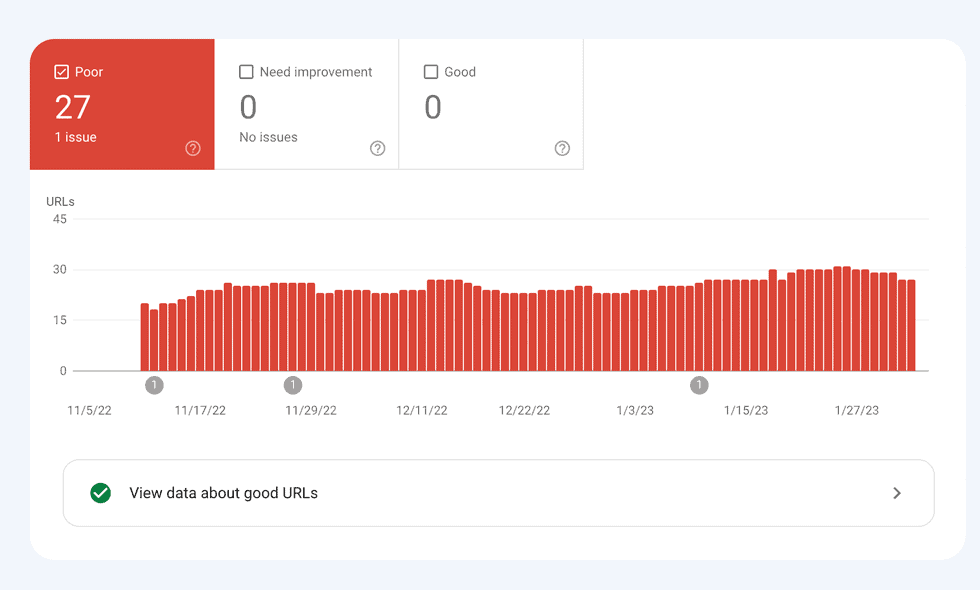
Google Search console is one of the best free tools for monitoring your website and preempting critical issues. Search Console is a free dashboard that connects to your domain and displays data related to performance, user experience, core vitals, page indexing, security and more.
12.Utilize AI for Content Creation
Artificial Intelligence (AI) has made a gigantic impact on the SEO industry in a very short time period. In particular, the release of ChatGPT by OpenAI introduces a wealth of exciting new ways to automate and improve the research and execution of SEO strategies.
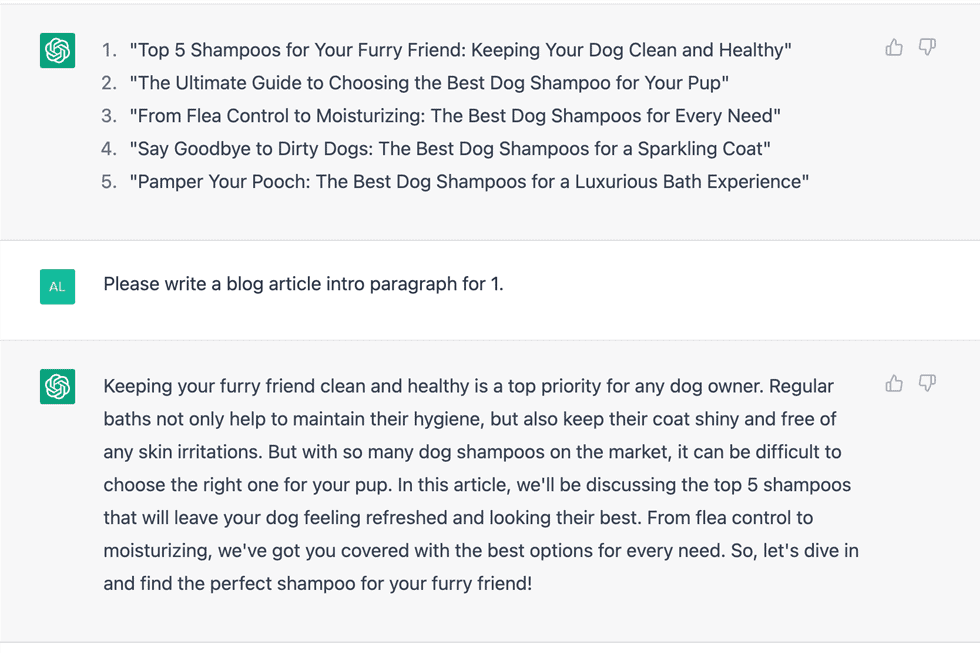
What is ChatGPT (according to ChatGPT)
ChatGPT is a natural language processing model that is capable of generating human-like text. It was developed by OpenAI, and it uses a variant of the GPT-3 architecture. ChatGPT is designed to be able to generate text that is coherent, engaging, and relevant to a given prompt, making it useful for a wide range of applications such as chatbots, language translation, and content generation.
Unlike previous language models, ChatGPT is specifically designed to be used in conversational contexts, so it is able to generate text that is more natural and varied than what was previously possible with language models.
While AI tools like ChatGPT are not (yet) a replacement for humans, there are plenty of use cases for them being utilized to improve, if not revolutionize the SEO process.
Some tangible ways to use ChatGPT for SEO purposes include:
- Creating content
- Keyword Research and Analysis
- Content Strategy Development
- Generating SEO Titles
13. Implement TikTok SEO Strategy
TikTik is the most popular social media platform in the world. With over 80-million monthly users in the United States alone, its reach and influence can’t be overlooked by businesses looking for new ways to reach their target audience.
According to Goole SVP Prabhakar Raghavan, their own research shows “40% of young people, when looking for a place for lunch, go first to TikTok or Instagram over Google Maps or Search.” This is why the New York Times recently called TikTok the new search engine for Gen Z.
So how does TikTok impact SEO? Google recently started showing TikTok accounts and videos in its search results, meaning TikTok videos can now be optimized for search in the same way as a blog post, landing page or YouTube video.
Optimizing TikTok videos to appear highly in search results following similar tactics when compared to Google:
- Understand search intent
- Use relevant keywords and hashtags in your content
- Take advantage of collaborations and co-marketing to expand reach
- Use external linking to drive users to other platforms to engage or convert
Wrapping Up
Search Engine Optimization has, is and will always be a fundamental means to driving more traffic and revenue for any business. FUZE is a leading Miami SEO company and we have over ten years experience planning and executing Search Engine Optimization strategies. Contact us today to learn how we can get you on a path to success.
Let`s Get
In Touch
Contact us today for a free consultation
and cost estimate for
your project.
We work with companies in all
industries, big or small.
Give Us a Call: 786-529-6039
Services
©2024 FUZE DIGITAL INC. Ignite Your Brand™ | privacy





